by Anna Karina Johansen, JMMDS
Concrete is one of the most commonly used materials in residential and other construction. So what happens when that concrete reaches the end of its lifespan and needs replacing? In one recent JMMDS project, concrete that would have otherwise been hauled away was re-purposed on site.
A new driveway recycling the old. Photo: Anna Johansen.
Not so long ago concrete waste ended up in a landfill. Fortunately, this practice is too costly today, so it is typically crushed to various degrees and re-used as substrate in roads or other pavement, drainage ditches, as rip rap, or in gabions. Recycling concrete also reduces the need for gravel mining, water use, heavy metals and carbon emissions for processing new cement, and pollution for trucking in new material.
Piles of concrete. L: UVM R: The Journal Record.
Instead of repaving the entire driveway for this project, we chose to create one-way tire strips (since a car can’t turn around in this space anyway) with planting between the strips for permeability, pollen for the homeowner’s bees, and aesthetics. To further break up the monotony of paving, the tire strips were composed of one type of exposed aggregate and the courtyard another, installed by Triad Associates, Inc., based in Haverhill, MA.
Vehicular grade exposed aggregate pavement. Photo: Anna Johansen.
Broken slabs of the waste concrete were placed on either side of the tire strips as stepping stones so that drivers and passengers could step out of the car and walk through the plantings with ease.
 Placing the pieces. Photos: Anna Johansen.
Placing the pieces. Photos: Anna Johansen.
Top: Plants taking hold. Bottom: Mazus and creeping Jenny. Photos: Anna Johansen.
The tire strips and concrete steppers were installed last fall and weathered the winter with minimal breakage. Groundcovers, which will stabilize the soil, were planted this summer and after about two months have started to fill in and flower! We used:
- Ajuga reptans ‘Chocolate Chip’
- Lysimachia nummularia (golden creeping Jenny)
- Mazus reptans ‘Alba’ (Mazus)
- Phlox subulata
- Thyme (5 varieties)
R: Athena enjoying the thyme. L: Ajuga and Mazus. Photos: Anna Johansen.
Check out these projects using recycled concrete by other designers.
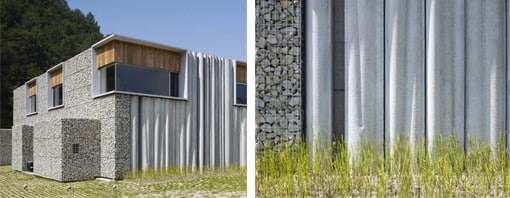
Recycled concrete in gabions, fabric-formed concrete walls with tiles and gravel. Photos: Kokona
Tobiah Horton of WRT designed the reused concrete planted medians for The Queens Plaza Bicycle and Pedestrian Landscape Improvement Project through Long Island City. The primary function of the concrete on edge is to direct pedestrians and bicyclists toward safe passage at the area’s new crosswalk and bikepath system. Photos: Tobiah Horton.
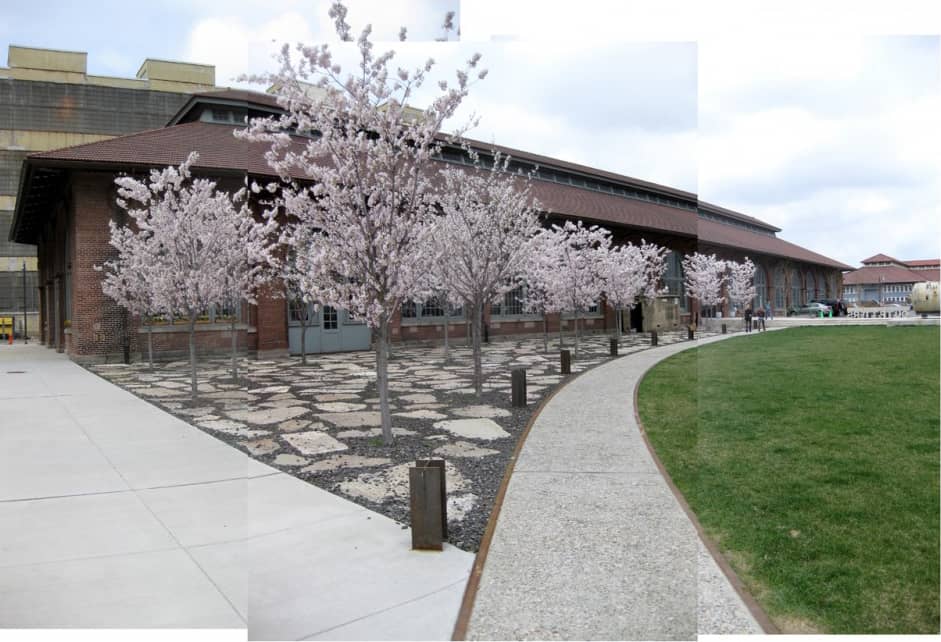 D.I.R.T. Studio uses recycled concrete at the Urban Outfitters Courtyard. Photo: archdaily.com.
D.I.R.T. Studio uses recycled concrete at the Urban Outfitters Courtyard. Photo: archdaily.com.
Recycled concrete retaining wall. Photo: Everything Gardens.
Other links:
Landscape for Life – Use Concrete Alternatives – For more information about the history of concrete, as well as the environmental impacts of cement and concrete with cement alternatives.
Check out http://groups.freecycle.org to find local recycling of building materials in your hometown.
Step-by-step directions on how to make your own recycled concrete path or terrace:

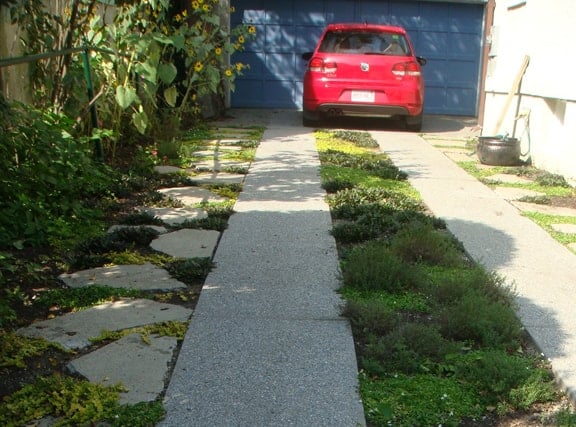
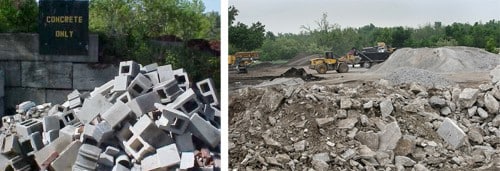
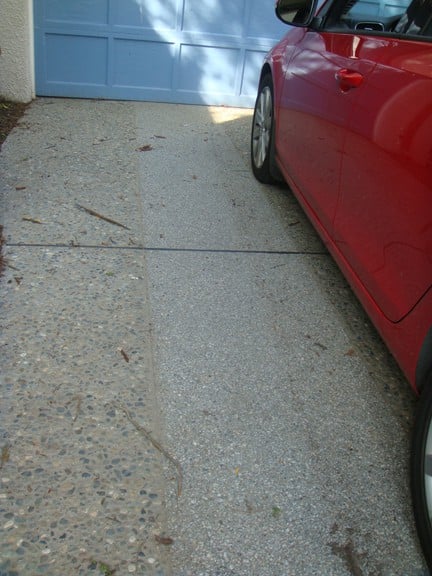
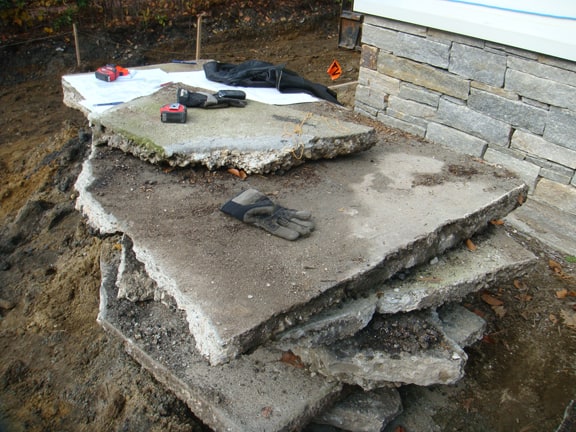
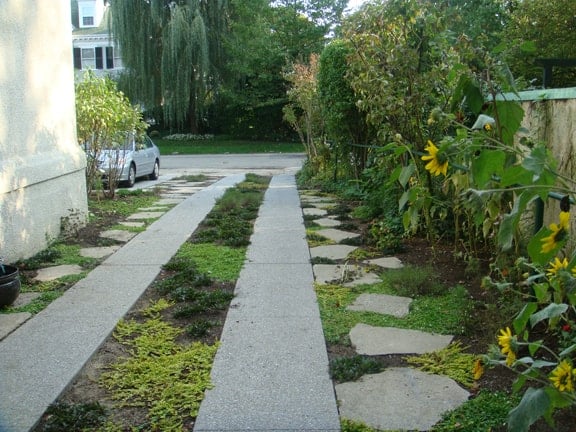


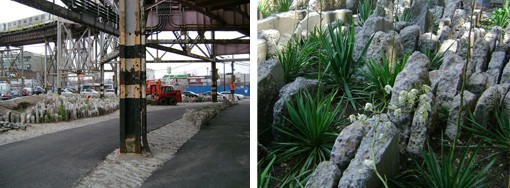
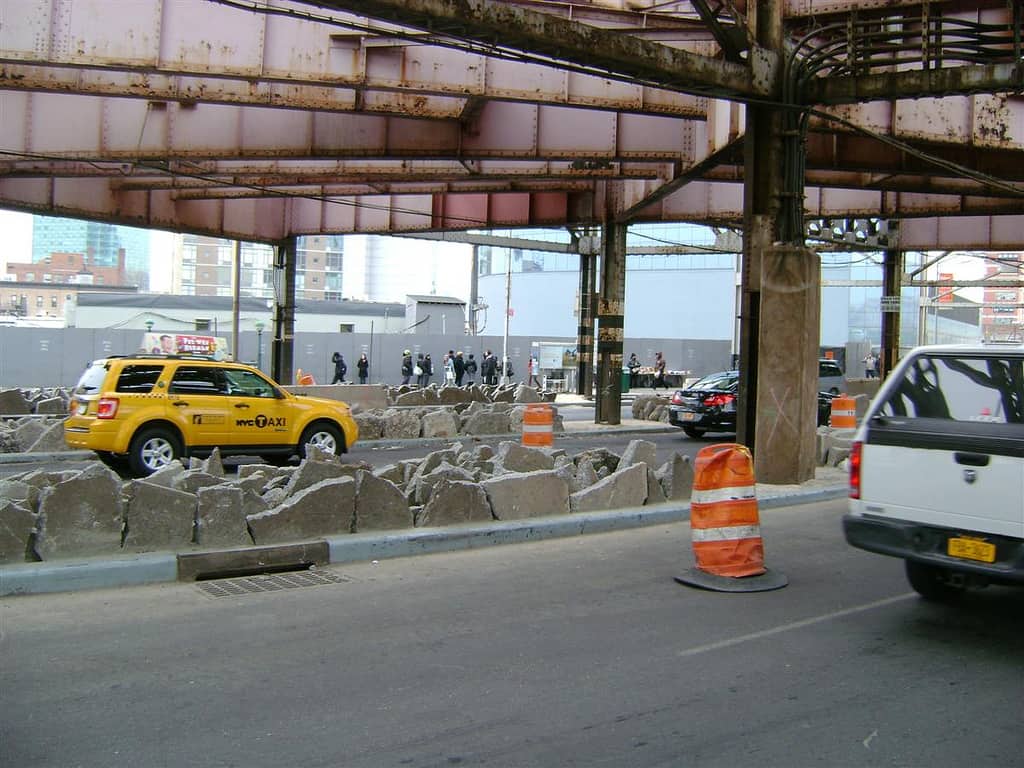
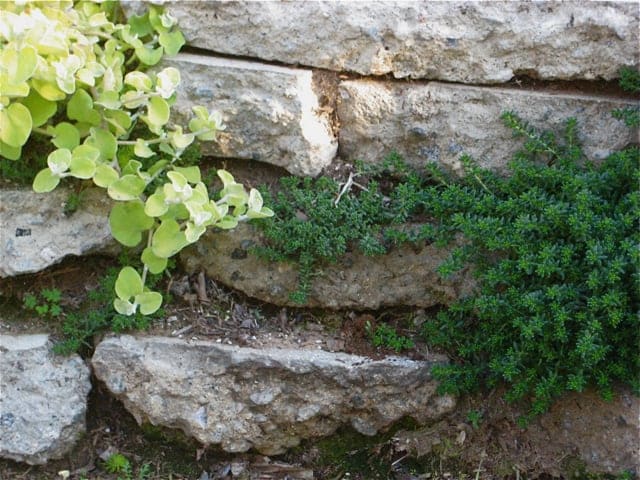





Thanks for the mention and links!
I love the driveway project – makes me think about what plants do or don’t do to “soften” stone, concrete or other hard materials. For better or worse (time will tell?) we chose plant material for its “likeness” to broken concrete rather than choosing a contrasting softener. This may be contributing to some published perceptions of harshness. We can’t blame the harshness on the yucca, look at the concrete, but it does force me to try to formulate a way of communicating design intent to clients that avoids the simplistic formulations of : “this plant is jagged like the stone: complimentary” and “this plant is soft and spreading and overlaps the edges thus softening: contrasting (?)… I’m searching for a rationale for relationships between plants and stone (even “anthropogenic stone” like concrete) that gets to something deeper – a visual expression or narrative that may originate in an ecology where relationships cycle from chemical in mineral form to chemical in biological form. And perhaps with certain basic characters established materials can then also “role play”, not always being themselves (in the sense of not being what we thought they were, or that we are surprised by a new experience of a material [what I was hoping for with broken concrete]) or taking on different characters by expressing different parts of their composition – flat and smooth or broken and upended concrete, for example.
I also thought about how perhaps impossible it might be to get the kind of lush richness of some of the creeping ground covers in public projects in high use high pollution areas…
Regards
Toby
I love the way that driveway turned out. What innovation. One downside to the concrete may be limey leachate but it certainly doesn’t seem to be affecting the plants I see here. Great job!
Tobiah,
I love your broken concrete project and am interested to see more examples of your ideas about the relationship of hardscape materials and plants. I like the selection of yucca as a complement, rather than contrast, to broken concrete (although the pics we found show the soft, green stage of yucca, rather than that prickly side it has). Show us more!
I love the idea of reusing concrete for a retaining wall- it looks great and is serving a functional purpose.